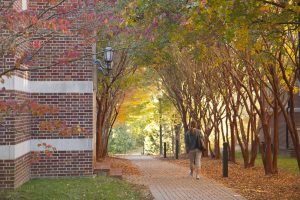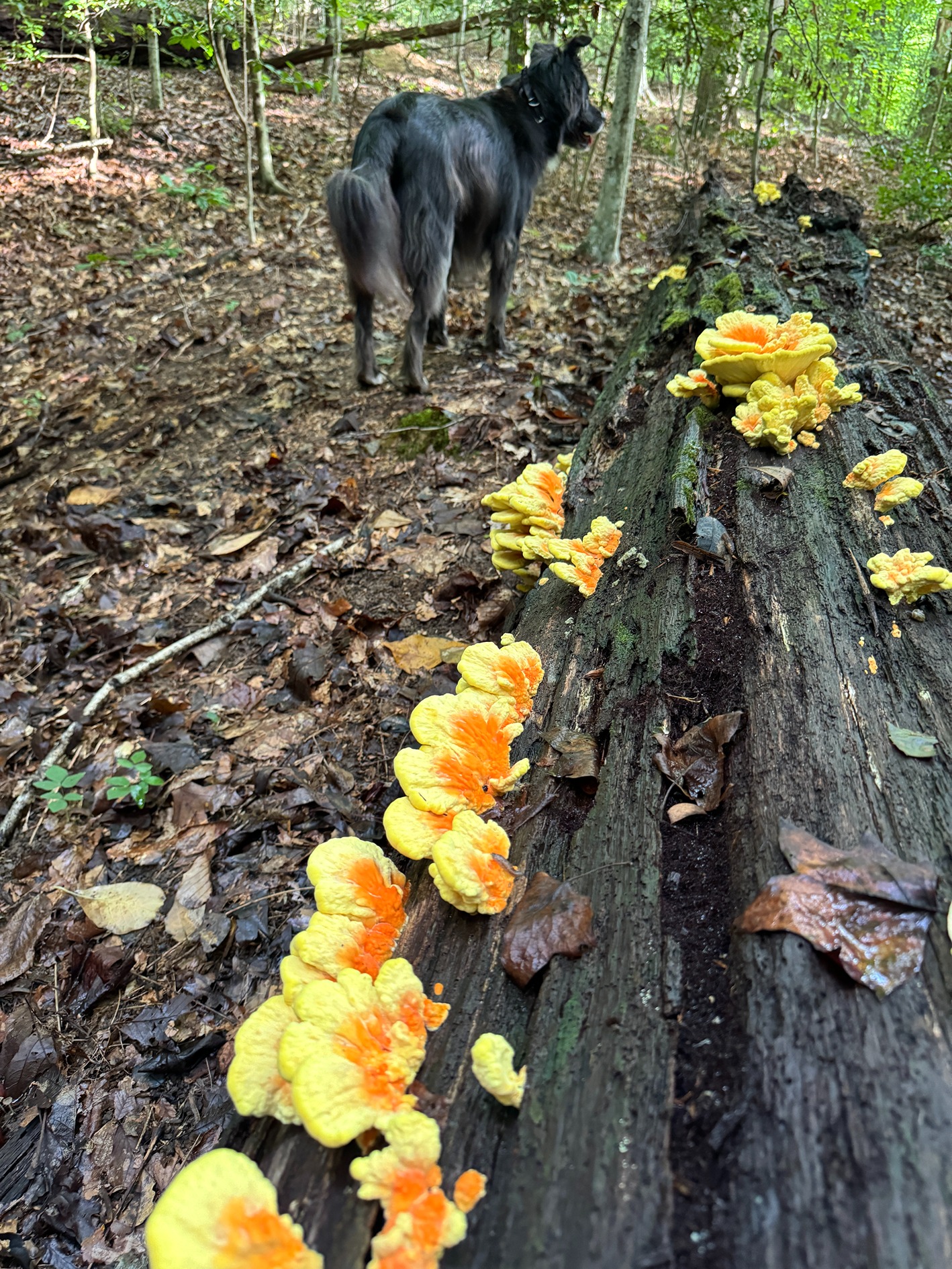Tree mapping project shows a dynamic new view of campus

Trees provide countless gifts. Todd Lookingbill, chair of the Department of Geography, Environment, and Sustainability, remembered a delightful present the flora at Richmond offered him a decade ago.
That summer, 7th through 10th-grade math and science teachers arrived on campus for the Department of Education’s Math Science Investigators program. Workshops provided activities for the students, and Lookingbill was invited to give a guest lecture.
“We came up with this idea of mapping trees, where you can measure their heights using basic trigonometry and then use that to calculate the volume of wood,” he said. From there, it’s possible to determine the carbon amount they store.
The idea was too interesting to remain theoretical. Not long after the math and science teachers headed out, two students from a UR living-learning community began a project for Lookingbill mapping individual trees on campus.

Ever since, students have steadily captured details about location, species, diameter, height, volume, and carbon storage for a comprehensive online tree inventory. With support from Spatial Analysis Lab operations manager Beth Zizzamia as well as biology professors Emily Boone and Jennifer Sevin, the project has assembled data on thousands of UR trees.
The project is rooted in other efforts — paper maps, a survey for the business school, and a website that biology professor John Hayden’s student Tihomir Kostadinov, a 2002 grad, created cataloging UR tree and shrub species.
“There’s this hodgepodge of loose files all over campus that we’re trying to bring together into one central repository,” Lookingbill said. “We also have this amazing Facilities crew with knowledge that is probably not anywhere else.”

The 18-square-acre Eco-Corridor restoration heightened interest in the project. Students learn in labs how to do fieldwork and use geographic information systems for analysis. Lookingbill said that during a semester, volunteers will typically add around 30 to 50 new trees total to the database, but Osher Lifelong Learning Institute student Tom Eliseuson took that to another level.
Having contributed to inventories at other universities where he took classes post-retirement, Eliseuson was eager to help at UR. Mapping here brought him all around the University. Since last spring, he’s recorded well over 1,000 new entries for the project, including loblolly pines, endangered ash trees, and Chinese pistachio trees.

“This is just an unbelievably beautiful campus,” he said. “There are some really old, impressive trees in the Eco-Corridor.”
All the Eco-Corridor trees are now mapped and marked with tiny silver tags to aid in tracking their health over time. Trees’ dynamic nature means that there is still plenty to discover about them, even after volunteers add the rest to the database.
“If we get through every tree, we’ll go back and resample them,” Lookingbill said. “And then, it’s a whole bunch of new questions that we can ask.”


